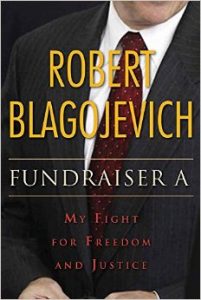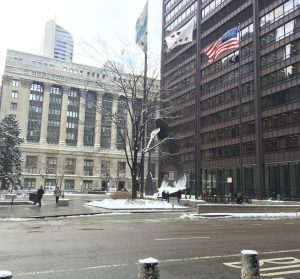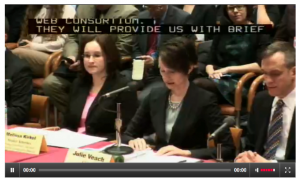Tom Kavanagh owns a condo in the 3400 block of North Seminary Avenue. After spending so many afternoons as a boy at Cubs games, and countless evenings of his early 20s on the streets of Wrigleyville, he thought living so close to the center of his baseball and nightlife universe would be a dream come true, his head swimming with visions of ivy-covered days and Old Style-fueled nights.
Five years later, he says the reality has been somewhat different than what he had hoped for.
“I hate this place,” he says with a laugh. “OK, I don’t hate it, but this is a hard place to live.”
SInce 2002, Kavanagh has learned firsthand the downside of mixing his sports entertainment with his home life: one smashed windshield, two break-ins to his condo, strangers vomiting on the yard in front of his building, urine in the alley shared with his neighbors, and extremely loud and highly intoxicated men and women parading up and down his block at all hours.
“It gets hard when the Cubs are at home. I move here, and this is what I get for my property taxes? Frat boys (vandalizing) my car?”
Kavanagh won’t say how much he paid for the luxury of living here, only admitting he can’t sell just yet, as real estate prices in what was already an overdeveloped neighborhood have stagnated to the point of barely surpassing inflation.
“It’s funny how that worked out,” he says. “I spend so long wanting to live here, and now I’m trapped. Good thing there’s so many bars nearby.”
Meanwhile, across town in the city’s other baseball haven, John and Clarissa Morgan are watching their neighborhood change around them, and not entirely for the better.
“We moved to Bridgeport after our daughter was born,” John Morgan says. “My wife and I both work Downtown, and we weren’t ready to move to the suburbs yet. Obviously, Lincoln Park or Wrigleyville weren’t good places to raise a kid, so we looked around the city, and we liked what we found here.”
“It’s not like we moved here just for the baseball games,” Clarissa Morgan adds, “even though I’m a Sox fan and it is nice being able to walk to Sox Park if we want to go see them. Still, that’d be a dumb reason to choose a home.”
After 10 years in the 3300 block of South Wallace Street, the couple says the neighborhood isn’t quite what they remember it being. With gargantuan new residential developments going up on Morgan and Halsted streets, new restaurants and shops opening around 31st, and 35th and Halsted becoming an increasingly trendy bar district, a sharp line is being drawn between newcomers seeing an opportunity to cash in and longtimers wondering if it’s time to cash out.
“The thing is, for so long the perception was this is some lousy part of town,” says John Morgan. “But no one who lives here sees that. Maybe that’s why we got such a good deal on our house.
The neighborhood is “clean, it’s safe, it’s friendly. It’s like ‘what are we doing wrong? Why is everyone so down on the South Side?’ But all of a sudden people want to live here? I mean, nothing’s changed except people started going to more ballgames and maybe saw that all along their ideas about Bridgeport were wrong.”
“We like it here,” says Clarissa Morgan. “But real estate in this city is pretty unstable. There might not be another time where we have as much to gain by selling.”
Indeed, as attendance at White Sox home games soared from 16,500 per game in 1999 to 36,500 in 2006, and with the national-level attention the area around U.S. Cellular Field received during the 2005 World Series run, many of the long-held views about Bridgeport were suddenly exposed as nothing more than a pro-North Side bias in local media and public perception. A closer look reveals two areas as divergent as their respective teams’ current records, with the Cubs No. 1 in the National League’s central division (70-66) and the Sox in last place in the American League’s central division (58-79).
Long portrayed as a crime-riddled welfare state, the data from the U.S. Census Bureau and Chicago Police Department paint a remarkably different portrait of the two neighborhoods.
While the $48,381 median annual income in Wrigleyville’s 60613 ZIP code exceeds Bridgeport’s $36,299, the four blocks surrounding Wrigley also carry a significantly higher crime rate than the four around U.S. Cellular Field.
In fact, from mid-2006 to mid-2007, Wrigleyville has actually exceeded its South Side counterpart in totals for all major categories of crime, including assault, murder, sexual assault, drug possession, robbery, home invasion and auto theft.
“That doesn’t surprise me,” says Kavanagh. “It looks nice here, you know, but everyone I know has been mugged or broken into or something. You don’t walk around scared, probably because there’s always so many people around, but every time someone tells me they want to move to my neighborhood I just hope they know what they’re really getting into.”
“Unless they want to buy my condo,” he adds with a smile, “then I tell them this is the best place to live in the world.”
Categories:
At Play City Life Public
Tags:
baseball bridgeport chicago cubs white sox wrigleyville






Be First to Comment